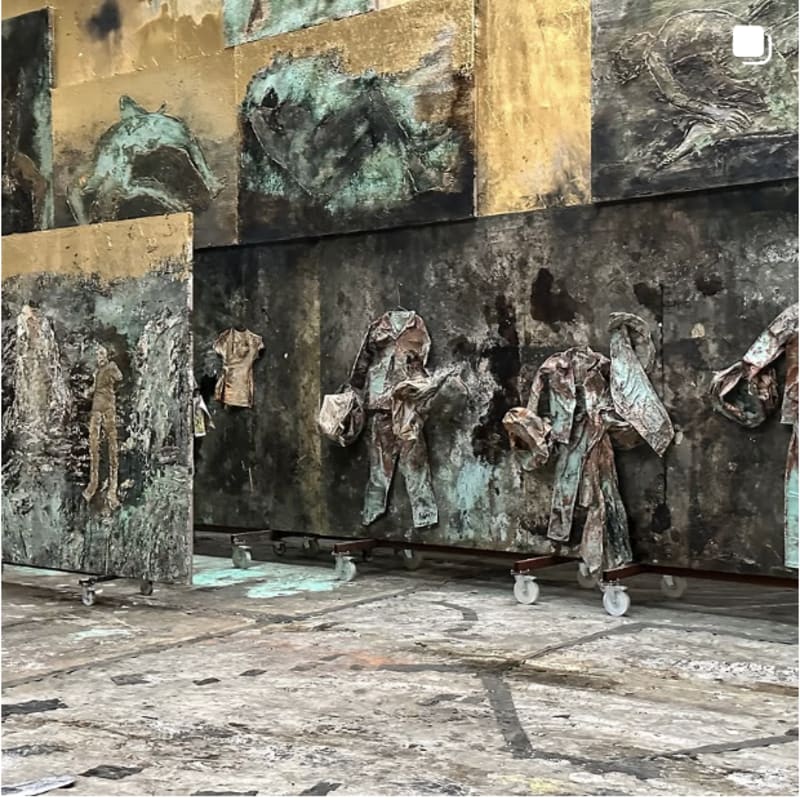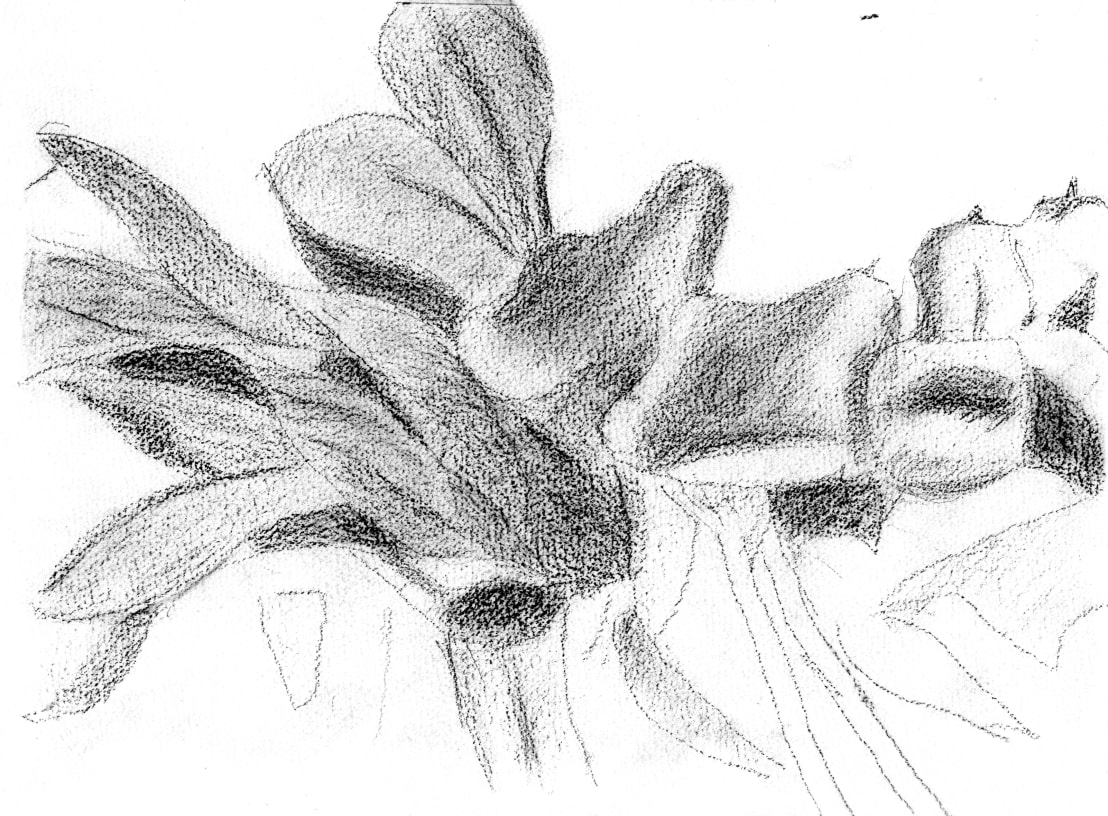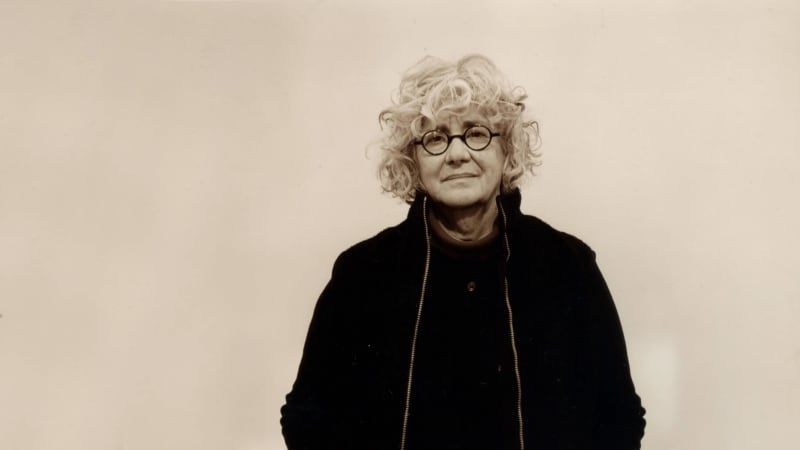
Robert Longo
罗伯特·隆戈
Study for Ophelia #16 《奥菲莉亚的研究》, 2005
Framed 陷害: 61.9 x 65.1 x 3.8 cm 厘米 (24.37 x 25.63 x 1.5 in 英寸)
... the roses and the bombs and the waves are things that exist at the moment of their being: a bomb is meant to explode, a rose is born to bloom, a wave is destined to crash. They are at the moment of their fulfilment. — Robert Longo
Study for Ophelia #16 (2005) harnesses Robert Longo’s skilful command of chiaroscuro to articulate the form of each individual rose petal in charcoal. The title of the work demonstrates the artist’s sustained engagement with the poetic imagery of English playwright William Shakespeare. Ophelia is the tragic heroine of Shakespeare’s Hamlet (1599–1601) who dies by drowning in a river surrounded by flowers. The episode was a favourite subject of the Pre-Raphaelite artists John Everett Millais and John William Waterhouse, who embraced the symbolic qualities of the different flowers. Longo takes up the theme in a more poetic, abstract manner, referencing Ophelia’s demise through the ephemeral nature of the delicate flower.
The artist’s most recent series of monumental charcoal drawings paying homage to the European pioneers of post-war art is presented in a solo exhibition, The New Beyond, at Thaddaeus Ropac, Paris Marais until 23 December 2022.
玫瑰、炸弹与海浪,它们皆为仅活于当下的东西。炸弹理应要爆破,玫瑰註定要开花, 海浪命定要粉碎。它们处于圓滿自我的当下。 —罗伯特·隆戈
罗伯特·隆戈在《Study for Ophelia #16》 (2005) 中利用对明暗法的娴熟掌控,用炭笔描绘出每块玫瑰花瓣的形状。作品的标题显示了艺术家对英国剧作家莎士比亚笔下的诗意意象的持续引用。奥菲莉亚是莎士比亚的《哈姆雷特》(1599-1601)中的悲剧女主角,她在鲜花满溢的河流中溺毙。 此一意象乃前拉斐尔时期艺术家约翰·埃弗拉德·米莱斯(John Everard Millais)和约翰·威廉·沃特豪斯(John William Waterhouse)锺爱的主题,他们在画作亦包涵各花种的符号特质。隆戈以一种更为诗意、更抽象的方式处理这个主题,通过脆弱花朵的稍纵即逝来刻划奥菲莉亚的殒落。
艺 术 家 最 近 向 欧 洲 战 后 艺 术 先 驱 致 敬 的 一 系 列 的 炭 笔 画,現 正 在 巴 黎 玛 莱 Thaddaeus Ropac画廊展出,《新的超越 》 个展将至2022年12月23日。

Explore current exhibitions

Explore gallery artists
-
Cory Arcangel
-
Jules de Balincourt
-
Stephan Balkenhol
-
Ali Banisadr
-
Miquel Barceló
-
Alvaro Barrington
-
Georg Baselitz
-
Oliver Beer
-
Joseph Beuys Estate
-
Marc Brandenburg
-
Lisa Brice
-
Jean–Marc Bustamante
-
Rosemarie Castoro Estate
-
Heemin Chung
-
Tony Cragg
-
Richard Deacon
-
Marcel Duchamp
-
Mandy El–Sayegh
-
VALIE EXPORT
-
Harun Farocki Estate
-
Sylvie Fleury
-
Adrian Ghenie
-
Gilbert & George
-
Amos Gitaï
-
Antony Gormley
-
Han Bing
-
Hans Josephsohn Estate
-
Donald Judd Foundation
-
Martha Jungwirth
-
Ilya & Emilia Kabakov
-
Alex Katz
-
Anselm Kiefer
-
Imi Knoebel
-
Wolfgang Laib
-
Jonathan Lasker
-
Lee Bul
-
Lee Kang-So
-
Roy Lichtenstein
-
Robert Longo
-
Liza Lou
-
Marcin Maciejowski
-
Robert Mapplethorpe Foundation
-
Jason Martin
-
Bjarne Melgaard
-
Vera Molnár
-
Ron Mueck
-
Patrick Neu
-
Nick Oberthaler
-
Eva Helene Pade
-
Irving Penn Foundation
-
Elizabeth Peyton
-
Jack Pierson
-
Rona Pondick
-
Imran Qureshi
-
Arnulf Rainer
-
Robert Rauschenberg Foundation
-
Daniel Richter
-
Gerwald Rockenschaub
-
Megan Rooney
-
James Rosenquist Estate
-
Tom Sachs
-
David Salle
-
Markus Schinwald
-
Sean Scully
-
Raqib Shaw
-
Andreas Slominski
-
Joan Snyder
-
Sturtevant Estate
-
Emilio Vedova Foundation
-
Banks Violette
-
Not Vital
-
Andy Warhol
-
Lawrence Weiner
-
Robert Wilson
-
Erwin Wurm
-
Zadie Xa
-
Yan Pei–Ming
-
Cory Arcangel
-
Jules de Balincourt
-
Stephan Balkenhol
-
Ali Banisadr
-
Miquel Barceló
-
Alvaro Barrington
-
Georg Baselitz
-
Oliver Beer
-
Joseph Beuys Estate
-
Marc Brandenburg
-
Lisa Brice
-
Jean–Marc Bustamante
-
Rosemarie Castoro Estate
-
Heemin Chung
-
Tony Cragg
-
Richard Deacon
-
Marcel Duchamp
-
Mandy El–Sayegh
-
VALIE EXPORT
-
Harun Farocki Estate
-
Sylvie Fleury
-
Adrian Ghenie
-
Gilbert & George
-
Amos Gitaï
-
Antony Gormley
-
Han Bing
-
Hans Josephsohn Estate
-
Donald Judd Foundation
-
Martha Jungwirth
-
Ilya & Emilia Kabakov
-
Alex Katz
-
Anselm Kiefer
-
Imi Knoebel
-
Wolfgang Laib
-
Jonathan Lasker
-
Lee Bul
-
Lee Kang-So
-
Roy Lichtenstein
-
Robert Longo
-
Liza Lou
-
Marcin Maciejowski
-
Robert Mapplethorpe Foundation
-
Jason Martin
-
Bjarne Melgaard
-
Vera Molnár
-
Ron Mueck
-
Patrick Neu
-
Nick Oberthaler
-
Eva Helene Pade
-
Irving Penn Foundation
-
Elizabeth Peyton
-
Jack Pierson
-
Rona Pondick
-
Imran Qureshi
-
Arnulf Rainer
-
Robert Rauschenberg Foundation
-
Daniel Richter
-
Gerwald Rockenschaub
-
Megan Rooney
-
James Rosenquist Estate
-
Tom Sachs
-
David Salle
-
Markus Schinwald
-
Sean Scully
-
Raqib Shaw
-
Andreas Slominski
-
Joan Snyder
-
Sturtevant Estate
-
Emilio Vedova Foundation
-
Banks Violette
-
Not Vital
-
Andy Warhol
-
Lawrence Weiner
-
Robert Wilson
-
Erwin Wurm
-
Zadie Xa
-
Yan Pei–Ming
Cookies allow us to provide you with useful features and to measure performance in order to improve your experience. By clicking 'Accept all', you agree to the use of all cookies. By clicking 'Manage Cookies', you only agree to the use of selected cookie categories. For more information, see our Privacy Policy.
Your shopping bag
Get exclusive updates from Thaddaeus Ropac
Sign up for updates
We'll be in touch with you shortly
-
Cory Arcangel
-
Jules de Balincourt
-
Stephan Balkenhol
-
Ali Banisadr
-
Miquel Barceló
-
Alvaro Barrington
-
Georg Baselitz
-
Oliver Beer
-
Joseph Beuys Estate
-
Marc Brandenburg
-
Lisa Brice
-
Jean–Marc Bustamante
-
Rosemarie Castoro Estate
-
Heemin Chung
-
Tony Cragg
-
Richard Deacon
-
Marcel Duchamp
-
Mandy El–Sayegh
-
VALIE EXPORT
-
Harun Farocki Estate
-
Sylvie Fleury
-
Adrian Ghenie
-
Gilbert & George
-
Amos Gitaï
-
Antony Gormley
-
Han Bing
-
Hans Josephsohn Estate
-
Donald Judd Foundation
-
Martha Jungwirth
-
Ilya & Emilia Kabakov
-
Alex Katz
-
Anselm Kiefer
-
Imi Knoebel
-
Wolfgang Laib
-
Jonathan Lasker
-
Lee Bul
-
Lee Kang-So
-
Roy Lichtenstein
-
Robert Longo
-
Liza Lou
-
Marcin Maciejowski
-
Robert Mapplethorpe Foundation
-
Jason Martin
-
Bjarne Melgaard
-
Vera Molnár
-
Ron Mueck
-
Patrick Neu
-
Nick Oberthaler
-
Eva Helene Pade
-
Irving Penn Foundation
-
Elizabeth Peyton
-
Jack Pierson
-
Rona Pondick
-
Imran Qureshi
-
Arnulf Rainer
-
Robert Rauschenberg Foundation
-
Daniel Richter
-
Gerwald Rockenschaub
-
Megan Rooney
-
James Rosenquist Estate
-
Tom Sachs
-
David Salle
-
Markus Schinwald
-
Sean Scully
-
Raqib Shaw
-
Andreas Slominski
-
Joan Snyder
-
Sturtevant Estate
-
Emilio Vedova Foundation
-
Banks Violette
-
Not Vital
-
Andy Warhol
-
Lawrence Weiner
-
Robert Wilson
-
Erwin Wurm
-
Zadie Xa
-
Yan Pei–Ming














































































































































































